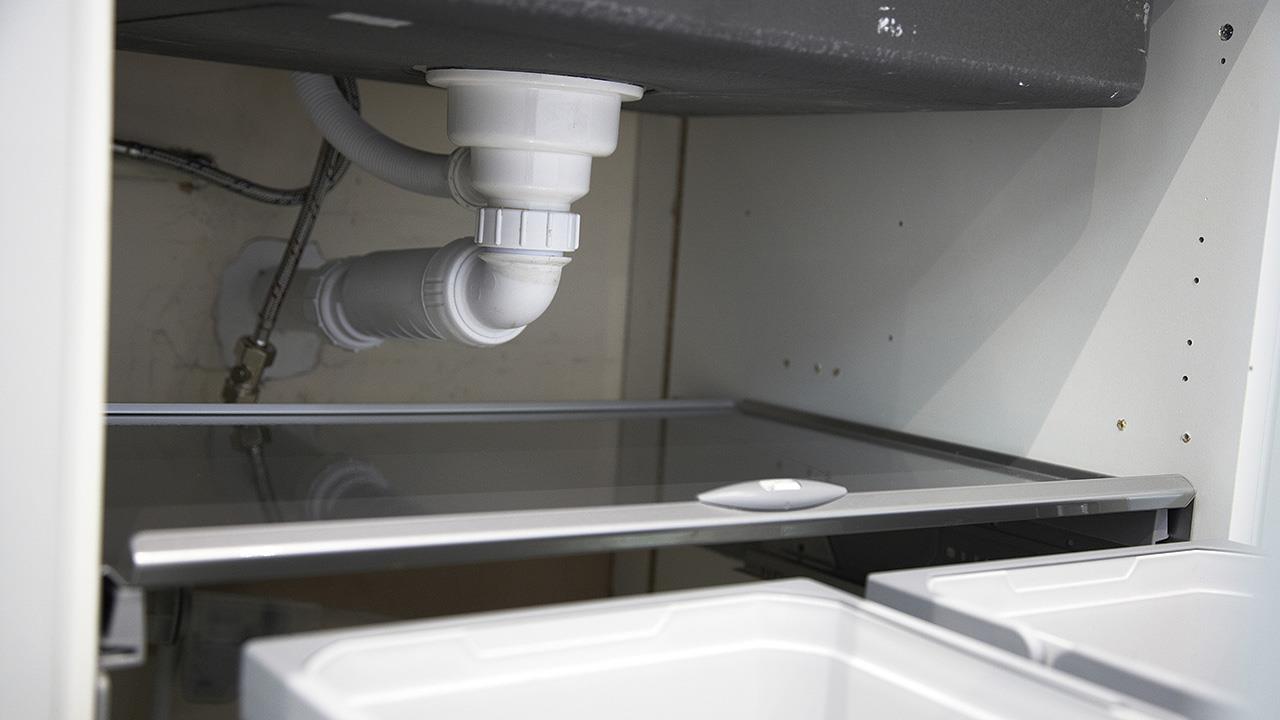

Steve Skeldon, Above Ground Product Manager at Wavin’s Osma brand, discusses how waterless traps are a cut above traditional water-filled traps.
With sanitation at the forefront of the public agenda due to the current pandemic, many find themselves re-evaluating the hygiene of their living and working spaces, and this has natural consequences for plumbers and installers.
Bathrooms in particular pose a risk when it comes to health and hygiene as, without appropriate barriers, contaminated water particles, or ‘aerosols’, can make their way into occupied spaces via pipework. This can at best cause an unpleasant odour, and at worst prove harmful due to potential toxicity.
As we know, one tool that can help prevent these issues is the water trap. This piece of plumbing has been designed to protect public health and has long played an important role in maintaining hygiene levels by preventing noxious sewer air from discharge systems escaping back into the occupied space of a building.
The right trap
Water traps have developed over time and now come in a range of shapes and sizes to suit a whole host of requirements. For example, due to the limited space beneath many baths and shower trays, shallower traps are the most suitable design, whereas ‘P’ and ‘S’ traps are generally used beneath kitchen sinks. Alternatively, ‘bottle’ traps are favoured for pedestal-mounted washbasins, as they fit more easily in the small area between the plinth and the wall.
While there are so many water types of trap available, their purpose still remains the same – keeping water in the bend to create a seal between the sewer and the room above. This barrier helps trap noxious gases, germs, foul smells, and contaminated aerosols – which might otherwise escape into the room from the drainage system.
Washed up?
Their familiarity makes water traps a popular choice among plumbers, despite the fact that they come with some significant downfalls. Without regular maintenance, water traps can fall into disrepair and become ineffective, resulting in unhygienic environments. For example, due to their curved design, blockages are common, which can be a time-consuming task to correct.
Traditional traps can also fail by losing their water seal due to evaporation, self-siphonage, or low use. This is especially common in spaces such as holiday homes where plumbing systems are left unused for long periods of time, meaning they are at risk of the traps drying out. When this occurs, protection is lost and toxic air can enter into the building, potentially bringing harm to the inhabitants.
More seriously, an investigation by the World Health Organisation and Hong Kong Health Authority in response to the 2003 SARS epidemic has proven that viruses can also spread through pipework via wastewater and dried out water traps, meaning they can aid the spread of germs and viruses when faulty. All of this indicates that it may be time to say goodbye to the traditional trap technology from almost 250 years ago and embrace a more modern and reliable alternative.
Trusty traps
One way to avoid traps drying out is by using one that doesn’t use water at all, such as a waterless trap. Developed with a self-sealing mechanical flap, instead of using a traditional water seal, it provides permanent, watertight protection. The membrane has been developed so that as water enters the silicone valve, the trap opens and stays open until the flow stops – eradicating the need for stagnant water. The outer pipe is made with a rigid body to prevent any distortion and, as the membrane is so lightweight, only a very small amount of water is required to open it. This means it is also suitable for use in condensate drainage systems for boilers, air conditioners, and even heating systems.
Ultimately, as waterless traps cannot dry out, they provide a more hygienic and manageable solution. The straight-through design limits the build-up of waste material and ensures an outstanding flow, therefore reducing the chance of blockages. This function makes them ideal for spaces that are left unoccupied for long periods of time, as they are less likely to fail and do not come with maintenance risks, such as drying out. Some examples of waterless traps are also highly versatile as they can be installed vertically or horizontally, making them suitable for a wide range of plumbing applications.
By understanding the benefits of waterless traps, you can achieve the desired result while providing your customer with guaranteed hygiene throughout the building in question.
If you'd like to keep up-to-date with the latest developments in the heating and plumbing industry, why not subscribe to our weekly newsletters? Just click the button below and you can ensure all the latest industry news and new product information lands in your inbox every week.